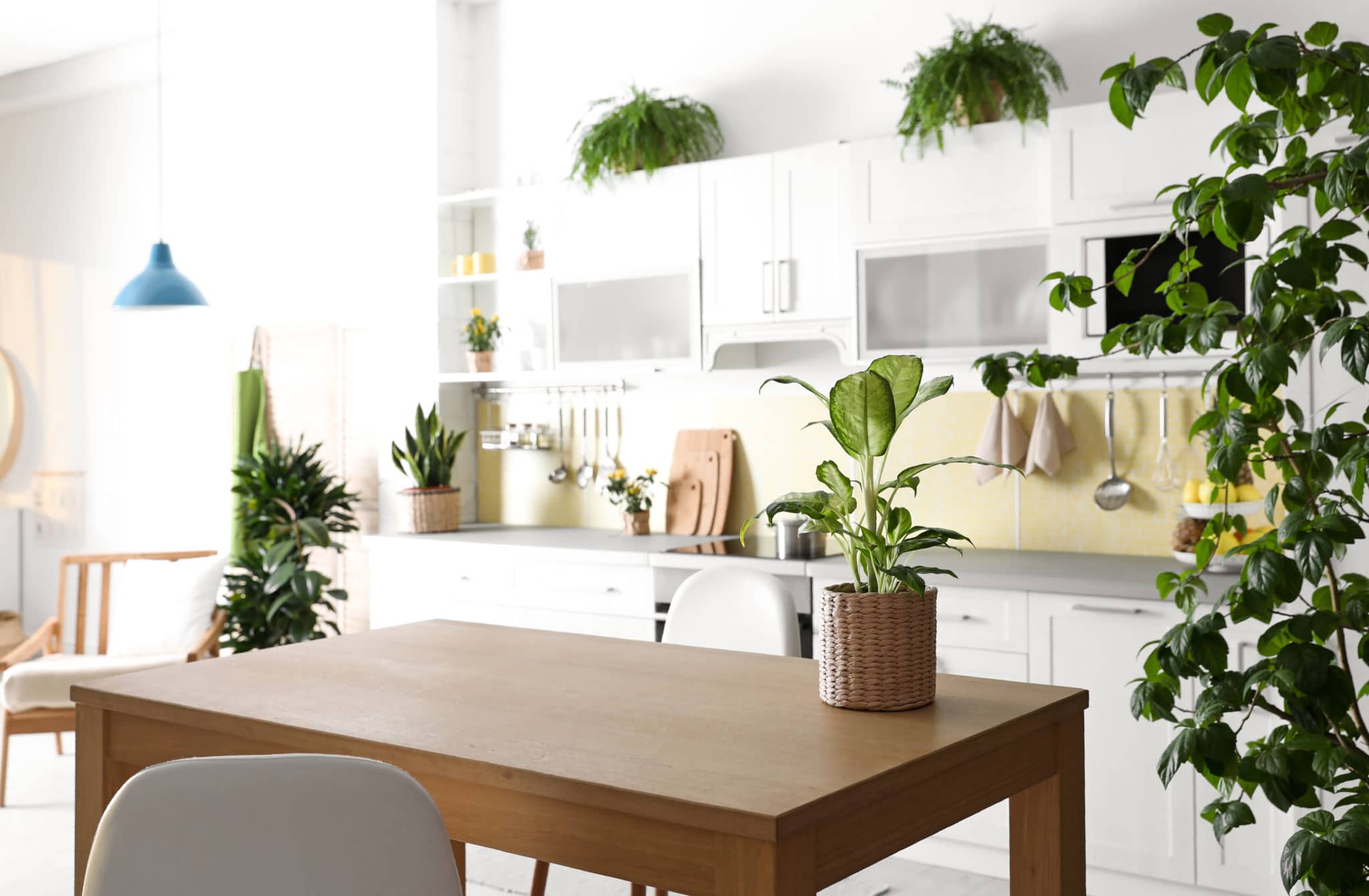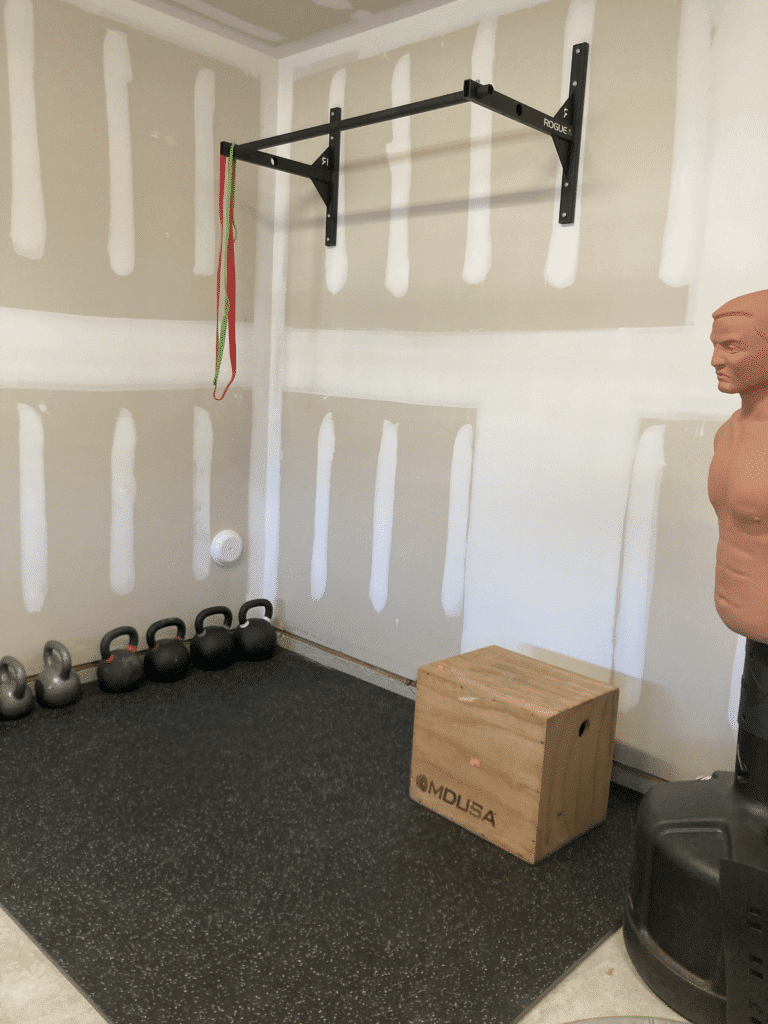
Upgrade Your Environment for Longevity and Happiness with these 7 Strategies
Last month, my family moved into a brand new house we had designed and built.
I never thought we’d build a house, and we didn’t set out to do so with this move.
But after a particularly frustrating first week of house-hunting, when we were nearing hopelessness, a light went on for us:
The things that are most important to us aren’t huge amounts of space or fancy upgrades. Instead, they’re the factors that we know lead to health and happiness, like proximity to the outdoors, interactions with other people, and the activities we love.
In other words, the environment around and within the house, for what it creates of our habits.
You’re probably not planning a big move anytime soon. And it’s even less likely you’re building a new house.
But every day you make decisions about our environment and how you experience it, and those decisions have a much greater impact on your life and your habits than do almost any conscious efforts to create change.
How Your Environment Shapes Your Health & Happiness
Two of my favorite health books are The Blue Zones and The Blue Zones of Happiness.
In those books, author Dan Buettner argues that your environment is a far more powerful lever in making changes than are deliberate, conscious attempts to alter your habits.
Think about it: we all have some experience with attempting to make a change over and over without success, despite applying every Atomic Habits tip we can muster.
This frustrating situation happens most often when the change we’re trying to make runs counter to the forces in our environment.
A good example, for me, is socialization: we know that friendships and interaction with other people are key to longevity, but for lots of us (especially now that so many work from home), it takes real effort to engage more with people. If you’re introverted like I am, it’s not easy to strike up conversations with new people, or even to make the effort to keep in touch with old friends.
You can make a conscious effort to do so, and it’ll last for a few days or weeks, but we all know that when willpower is required, it’s not long before old habits take over and we give up.
But if you live in a place where those interactions happen naturally — say, a neighborhood where people walk a lot and hang out on their front porches — then meeting people becomes way easier, because this environment that fosters the desired behavior is there even when you don’t feel like putting forth effort.
So with the rare chance to design our environment from scratch with this new house, we wanted to get it right.
Of course, most of the time we aren’t in a position to make such large and permanent changes to our environment as when we’re moving to a new house, but there are still a lot of things we can do to modify the environment we’re stuck with (for now, anyway).
With that, here are the choices we made to upgrade our environment, in hopes one or two might inspire you to change some part of yours. With each one, I’ve also given a more practical alternative that you can put into practice right where you are, even if you’re not moving anytime soon.
1. Prioritize the kitchen.
Put simply: when we cook at home, we eat healthily. When we eat out, it’s a lot harder to make the healthiest choices than when we plan and cook our meals from scratch.
A kitchen that’s inviting and encourages cooking means more planned meals, more pots of beans made for the week ahead, more vegetables being prepared, and longer, slower mealtimes and conversations with family and friends.
For now: Make your kitchen a joy to be in. Declutter it of the items you rarely use. Instead, put the handful of tools that help you create your favorite meals within easy reach. Would painting the cabinets, a tile backsplash, or a refreshed table make you want to spend more time cooking? If so, maybe it’s worth seeing the change as an investment in your health.
2. Have a yard big enough for a garden and time outdoors — without so much space that you never bump into neighbors.
There’s nothing like growing your own food to foster an appreciation for how what we eat ends up on our plates. A garden is a great tool for developing healthy-eating kids (a green bean they picked themselves isn’t so scary) and giving reasons to make a salad or center meals around a vegetable you’ve got a lot of (hello, zucchini).
Oh, and in case you needed another reason, gardening is also a favorite form of exercise among Blue Zones centenarians.
For now: Build a small garden in your backyard this summer, and start with some easy-to-grow plants. If you don’t have the space, you could put out a few pots big enough to grow tomatoes, or if nothing else, grow a windowsill herb garden.
3. Choose a neighborhood where lots of people walk and spend time outside, to facilitate interactions.
For all the effort I’ve put into nutrition and fitness, I’ve tended to neglect another critical pillar of longevity: friendships and social interaction.
It’s not that I’ve never tried to put forth more effort in this department… it’s just that it takes, well, effort, and that’s hard to sustain. It’s a lot easier to make social connections when they pop up in the course of your day-to-day life, so I’ve realized how important it is to live in a place where interactions with other people happen frequently.
Plus, we tend to behave like the people around us do. When after-dinner walks and games in the yard are the norm, you’re much more likely to partake of them yourself.
For now: If you can’t permanently shift your environment to foster more social connection, you can at least form the habit of temporarily changing it — by going somewhere! Try working in a coffee shop for a morning or two each week, exercising in a park, and more often choosing social events with other people over time by yourself watching Netflix.
4. Look for built-in fitness opportunities like tennis courts, a lap pool, and walking or running trails.
Exercise doesn’t have to look like going to the gym. Blue Zoners integrate exercise into their lives without trying — walking on hilly terrain, gardening, and playing sports.
I spent a good deal of my 20’s and 30’s training for marathons and ultras. I’m glad I did, but eventually all those lonely miles led to burnout and several years of inactivity.
Recently I realized that if I’m going to be fit and active for decades to come — and I am — then I need fitness to be fun. And social.
For now: Is there a running club in your town? A YMCA? A park with trails or fitness equipment? Maybe these aren’t right in your neighborhood, but your town or your city is still your environment, and chances are there are other people there who value fitness and exercise together.
5. Build a garage gym.
Making fitness more fun doesn’t mean there’s no place for lifting weights. I’ve loved kettlebell training from home for the past year and a half, and I’m so excited to finally have a proper space for it.
With just a few hundred dollars, put together a simple garage gym — a thick rubber surface, a bunch of kettlebells, and a sturdy pull-up bar.
That’s a lot safer, more inviting, and less out-of-sight-out-of-mind than when I kept my kettlebells in the closet and did workouts in the living room.

For now: Dedicate a small space in your house or apartment for a kettlebell, a doorframe pull-up bar, or a suspension training system. Somewhere that doesn’t get in your way, but you pass by it enough to remember to use it.
6. Create a space that’s just for relaxation and enjoyment.
The Blue Zones of Happiness introduced me to the concept of the hygge (pronounced HYOO-guh) — the Danish and Norwegian word that means a warm atmosphere and enjoyment of the good things in life with good people.
How can you create more hygge at home? With a space that’s entirely dedicated to it. For some, it’s a game room, for others it’s the outdoor patio and firepit, and for still others it’s a cozy, TV-free room for lounging, reading, and chatting.
In our new house, we decided to put our big dinner table just off the kitchen, to free up the dining room space for a “wining room” — a space we’re building to feel like a Mediterranean wine bar, where we can entertain or just take time to relax and talk.
(For the record, red wine is another Blue Zones staple, though much as I might enjoy it and the time spent drinking it with friends, I consider it debatable as an actual contributor to longevity.)
For now: Your space can be as small as a chair and side table, kept clear of clutter and distractions that don’t foster the hygge you’ve designated the space for.
7. Encourage multigenerational living and visitors.
A big difference between Blue Zones cultures and the way most of us live is the presence of several generations under the same roof.
Keeping family ties tight helps both older and younger generations feel a sense of purpose and connection — responsibilities, wisdom, and time are shared far more than they are in most modern families.
The guest room has always been an afterthought in our previous homes — most often it’s been “the kids can sleep on our floor and the guests can have their room.”
But now in choosing the perfect home with Blue Zones principles in mind, this time we prioritized the guest room — putting it on the first floor and with a walk-in shower that’s easier for older people to get into.
All in hopes, of course, that this room gets a lot of use.
For now: Branch out of your typical similar-age friend activities and join a club, church, or group where older or younger people interact regularly. That, and call and visit your parents (or kids) more — don’t just text!
Instead of Working to Change Your Habits, Put Your Environment to Work for You
We tend to think of changing our habits as hard… and that’s because it is, when we’re swimming upstream. If your environment is working against you, all the habit-change hacks in the world might not make a difference.
But if you can take steps to consciously design your environment — in small ways today, and more impactful ways over time — you’ll build in a giant advantage that helps make the behaviors you’re seeking almost automatic, so that you’ll create many of the healthy, happy habits you’re seeking… without even trying.
Leave a Reply
Wonderful suggestions, thabk you very much!
Great article Matt. A really sensible reminder of just how simple and practical it is to lead a good, happy and sustainable life.
Thanks
Mardi




I think environment is the biggest deterrent to maintaining lifestyle changes, especially in cold climates when conditions change. Winter in these areas make it hard to eat good foods and cuts down options for working out which can lead to increased eating, slipping to unhealthy foods, and skipping exercise.